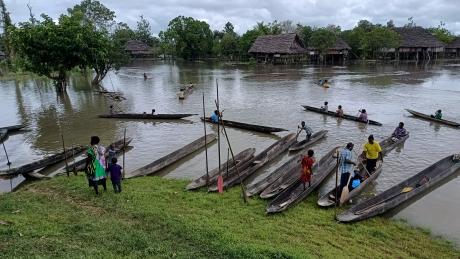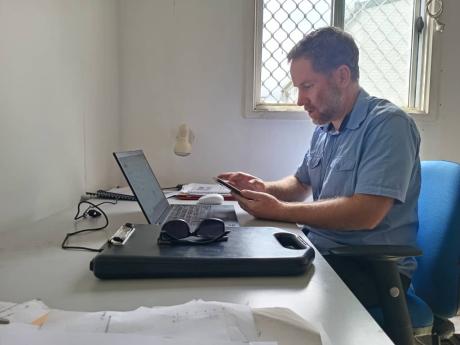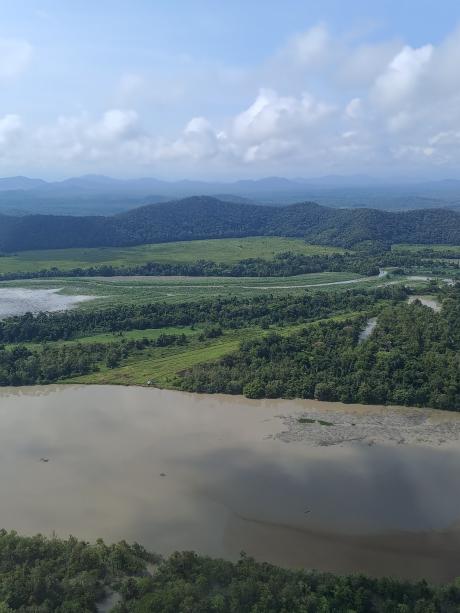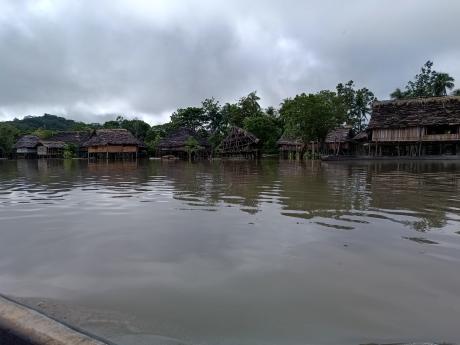
After years of closure due to ground condition concerns, Hauna airstrip is on the path to reopening after the latest assessment, bringing fresh hope to a remote Sepik River community long cut off from MAF air services.
Story by Mandy Glass
Hauna airstrip lies beside an oxbow lake on the Sepik River. More than a thousand people live in the surrounding area.
The village of Hauna is just a 15-minute motor canoe ride from the airstrip and is home to a primary school, clinic, church, teacher training college and the base of Sepik Christian Ministries.
The US-based Laszlo Mission League supports much of the local work in education, Bible translation and community development.
Jonah Maiyak, Director of Sepik Christian Ministries, described the potential of the airstrip to bring help, hope and healing to the local population.
“Those who will be arriving at Hauna airstrip include a medical team and missionaries from the United States, as well as government officials,” he said. “They, along with private businesspeople, will be using the airstrip for their movements to and from the area.”
What I love about these projects, and what makes it a privilege to help, is that these communities are taking their own futures into their own hands.
Due to surface strength risks, Hauna airstrip was closed to MAF operations in 2020 and remained closed longer than most due to persistent ground issues.

In March 2025, MAF’s Jonny Watson—an engineering geologist with significant experience in airstrip restoration—was invited to assess Hauna’s potential for reopening.
Through Jonny’s expertise, MAF is able to provide communities with the technical advice needed to restore their own airstrips.
Currently, Jonny is engaged with six communities across PNG, advising them how to get their airstrips ready for safe use—whether by restoring and reopening previously used airstrips or supporting the development of new runways being cut out of the jungle or constructed on mountainsides.

Jonny travelled the final leg to Hauna via floatplane with the assistance of emergency flight provider Samaritan Aviation.
“This particular airstrip has been on my radar for some time,” he said. “Earlier testing methods suggested the soil was unsuitable, but with our new hand shear vane testing approach, we’ve confirmed the surface now meets the strength requirements—pending some minor restoration and a formal MAF risk assessment.”
“If reopened, the impact will be immense. Instead of an exhausting 8-hour canoe trip to Pagwi followed by another 5 hours by bus on rough roads to reach Wewak, flights could cut the journey down to just 40 to 45 minutes.
“That’s a game-changer for medical emergencies, access to education and connection to the outside world,” he said.

During his stay, Jonny developed a phased work plan, including drainage improvements for long-term sustainability.
“What I love about these projects, and what makes it a privilege to help, is that these communities are taking their own futures into their own hands,” Jonny said.
“I love it that they take the initiative, they are driven, they are getting the job done.
“Often all these kinds of communities need to restore their airstrips or build a new one is a good bit of technical advice.”
“My prayer,” he added, “is that Hauna will soon see a test landing and reconnect with the wider world once again.”
